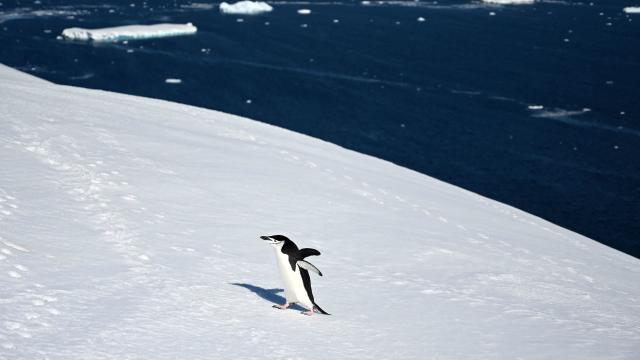There are signs Antarctica just experienced its highest melt extent ever recorded in the satellite era. The big meltdown hit on Christmas Eve and is bad news for a continent already dealing with a lot. With summer just getting started there, this is a serious case of Summertime Sadness.
Antarctic is the largest stash of ice on the planet. Warm oceans have posed the biggest threat to that ice by undercutting the ice shelves that float out into the sea, particularly the tongues of ice around West Antarctica. But surface melt could become a bigger concern, and the Christmas Eve meltdown is indicative of the concerns.
Preliminary findings from modelling done at the University of Liège in Belgium show that the percentage of surface melt on the continent spiked on December 24. The modelling uses weather forecasts to simulate surface melt. Because the environment is so harsh in Antarctica, weather station data is tough to come by so these are best estimates.
Antarctic surface melt season starts in mid-November and runs into February. Late December and early January are the height of the melt season. On average, just eight per cent of Antarctica’s surface melts at the peak. But this year has been anything but average, with everyday since late November showing well above normal surface melt extent. That culminated in a big melt spike on Christmas Eve when about 16 per cent of the continent’s icy surface went into meltdown.
That’s an area equivalent to the size of Denmark. West Antarctica—home to some of the most endangered ice on the planet—has seen the worst of the melt season according to the University of Liège data. But even the normally colder and higher East Antarctic hasn’t escaped a more watery fate.
When the surface melts, a glaze of ice can form when it refreezes. But if enough ice melts, then the melt can cause water to start pooling on the surface or flowing and sneaking into ice cracks, where it can fracture the ice apart. Scientists have observed this in the heart of Antarctica, but Antarctic Peninsula has had it the worst.
Robin Bell, a geophysics professor at Columbia University’s Lamont-Doherty Earth Observatory, told Earther that if this melt continues or worsens, it could hasten the collapse of the ice shelves already under threat from below. And that could pose serious risks to people who live along the coast by allowing land ice to tumble into the sea.
“[The ice shelves are] kind of like the cork in the bottle. They’re holding back a lot of the ice in Antarctica,” Bell said. “It means you’re pumping more ice into the ocean, and that’s what matters for sea level.”
Antarctic is unfortunately not the only stash of ice to be dealing with more extreme melt season. Researchers have observed the same phenomenon in Greenland as well. This summer’s melt season set a record for daily ice loss as a result of surface melting.
Greenland has been the main contributor to sea level rise. With Antarctica’s ice loss accelerating, we’re starting to get into dangerous territory.
